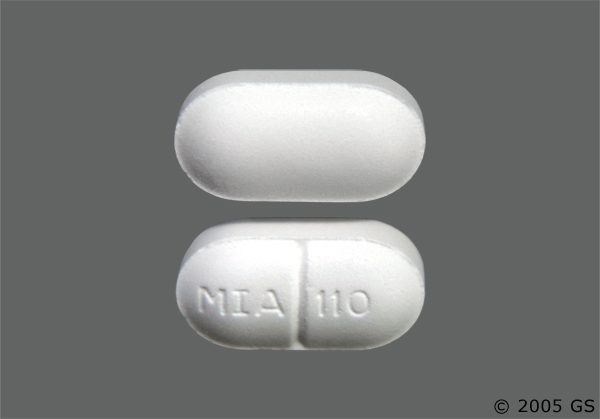The treatment of Fioricet overdose is complicated by the presence of two substances which are highly toxic when taken in excessive amounts. Fioricet overdoses generally result in toxic amounts of both acetaminophen and butalbital being consumed at once, requiring both overdoses to be treated at once.
What Are The Ingredients In Fioricet?
A Combination Medication is a drug which includes two or more pharmaceutical ingredients in a fixed dose. There are three ingredients in standard Fioricet: Acetaminophen, Butalbital, and Caffeine. All three ingredients have different effects which combine to soothe headaches.
- Acetaminophen is a medication which alleviates pain and reduces fever. It’s more widely known by the brand name Tylenol. Acetaminophen works by impairing the production of the prostaglandin chemical in the brain. This chemical activates pain signals in the nervous system.
- Butalbital is a Sedative Barbiturate which stimulates the brain’s production of GABA. This neurotransmitter calms the nervous system by blocking signals among neurons. It also relaxes muscle tension in the head, thereby alleviating headaches. Butalbital is a Schedule III controlled substance in the United States.
- Caffeine is a Stimulant which raises a person’s blood pressure. While high blood pressure is not necessarily healthy, low blood pressure worsens headaches by causing blood vessels to expand and push against the brain. By raising blood pressure, Caffeine causes blood vessels to constrict and increases blood flow. This effect helps relieve headaches.
With these three ingredients at work, Fioricet can be an effective source of headache relief. However, the medication also poses risks for side effects, overdose, and addiction. For this reason, doctors usually refrain from prescribing Fioricet until safer over-the-counter medications fail to help their patients.
What Are The Symptoms Of A Fioricet Overdose?
While Butalbital is the addictive ingredient in Fioricet, Acetaminophen is the ingredient which is liable to cause an overdose. Unfortunately, people who misuse Fioricet as a recreational drug or as a way to suppress withdrawal are most likely to suffer an overdose.
When a person overdoses on Fioricet, the Acetaminophen will damage their liver. In severe cases, an overdose can even provoke fatal liver failure. For this reason, it is dangerous to take Fioricet together with another medication which contains Acetaminophen because it increases the risk of overdose and death. Furthermore, drinking alcohol while taking Fioricet may also inflict liver damage.
A Fioricet overdose is a medical emergency, so it’s important to know the symptoms. An overdose on Fioricet may cause jaundice, a yellowing of the skin and eyes. Other symptoms of an overdose include:
-
-
- Confusion
- Convulsions and seizures
- Fainting
- Irregular heartbeat
- Lack of appetite
- Nausea and vomiting
- Restlessness
- Stomach pain
- Sweating
- Tremors
-
Fioricet overdose by anyone and/or any consumption by persons to whom it is not prescribed (particularly children) is always a medical emergency and medical attention must be sought immediately if an overdose or consumption by other persons is suspected.

Fioricet overdose is often fatal and symptoms may not present for hours following consumption, once initial overdose symptoms present they can progress rapidly and there may not be time to reach appropriate medical care after this point.
Acetaminophen over-exerts its toxicity through the production of a toxic metabolite which produces liver damage in doses of 3,000mg or more per day and acute liver failure in doses above that. The specific antidote to acetaminophen overdose is N-acetyl-cysteine. Kidney failure and stomach bleeding may also occur.
Butalbital overdoses exerts its toxicity through excessive sedation resulting in respiratory depression and ultimately death via hypoxia. Nonlethal overdoses may also result in coma and death. There is no specific antidote to butalbital overdose and treatment is supportive, common treatment regimens generally include the administration of intravenous administration of saline, naloxone, thiamine, glucose, NaHCO3 to alkalize the urine to increase rate of excretion, and activated charcoal via nasogastric tube.
It is not uncommon for doctor to recommend observation of the patient in the Emergency Department for a number of hours or admission to the hospital for several days of observation if symptoms are severe and to counsel the patient on drug abuse and/or refer them for psychiatric evaluation.
Available Fioricet Treatment Options
In the event of an overdose on Fioricet, call 911 immediately. Emergency treatment is critical to ensure the person remains stable. After the immediate overdose risk is averted, subsequent care is essential to effectively address the drug abuse or addiction issue.
Fioricet rehab treatment normally begins with the detoxification phase. This process reduces the patient’s dosage of Fioricet until they are no longer taking the drug at all. The detoxification phase of the treatment eliminates the patient’s physical dependence on Fioricet. The remainder of a treatment program for Fioricet addiction deals primarily with the psychological aspect of the addiction.